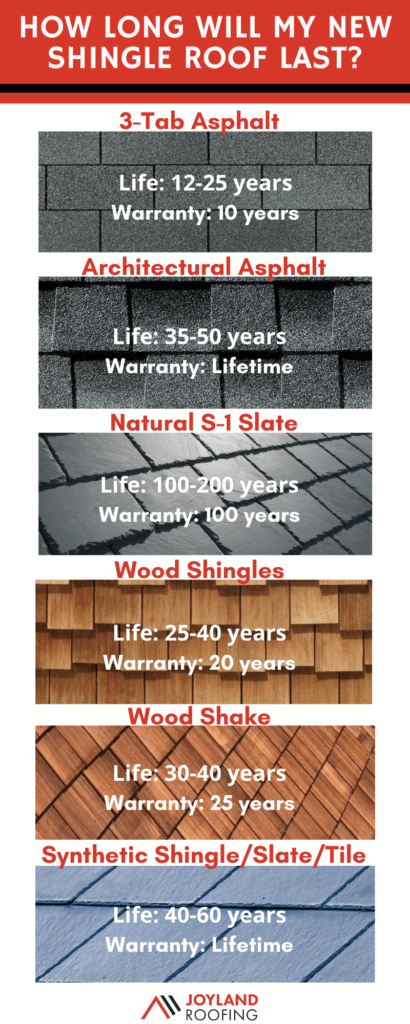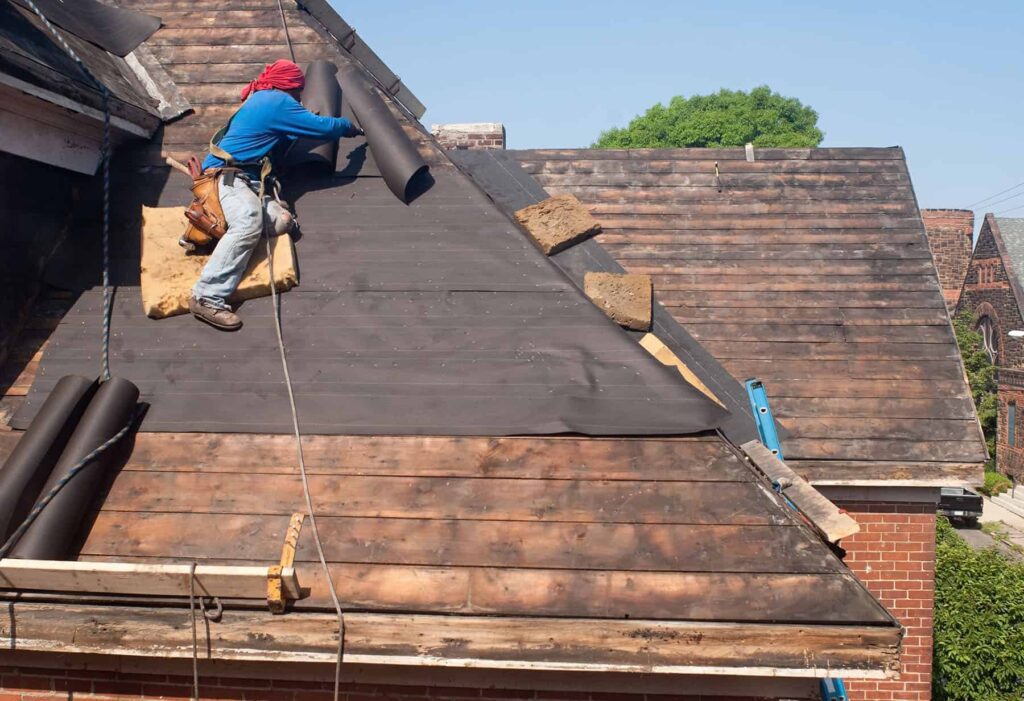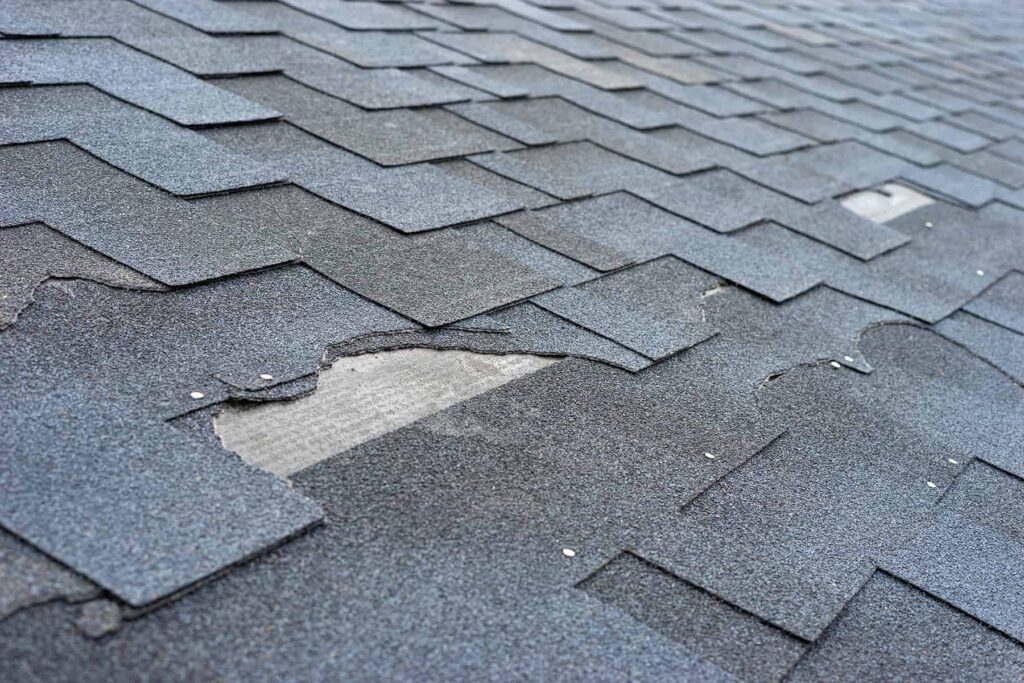Roofs serve as one of the most vital components of a home, shielding us from the elements and ensuring our comfort. Yet, have you ever wondered how long they typically last? Understanding the lifespan of a roof is crucial for homeowners to effectively plan and budget for necessary repairs or replacements. So, let’s explore the average age of a roof before replacement, unraveling the mysteries surrounding this essential feature of our homes.

Factors That Affect Roof Lifespan
When it comes to the longevity of your roof, there are several factors that play a significant role. Understanding these factors can help you take the necessary steps to maintain and prolong the lifespan of your roof. Let’s dive into the key factors that can affect the lifespan of your roof.
Type of Roofing Material
The type of roofing material you choose can have a significant impact on how long your roof will last. Different materials have different durability levels and maintenance requirements. It’s important to research and select a roofing material that suits both your aesthetic preferences and the climate in which you live.
Installation Quality
The quality of the installation is another crucial factor that can impact the lifespan of your roof. A poorly installed roof may develop issues sooner, leading to premature aging and deterioration. To ensure the longevity of your roof, it’s essential to hire a reputable and experienced roofing contractor who will install the roofing material correctly and according to industry standards.
Climate and Weather Conditions
The climate and weather conditions in your area can heavily influence the lifespan of your roof. Extreme heat, cold temperatures, high humidity, heavy rainfall, snow, and strong winds can all take a toll on your roof over time. It’s important to consider your local climate when choosing a roofing material and to regularly inspect and maintain your roof to address any weather-related damage before it worsens.
Roof Slope and Orientation
The slope and orientation of your roof can also impact its lifespan. A steeper slope can help prevent water from pooling on your roof, reducing the risk of leaks and water damage. Additionally, the orientation of your roof in relation to the sun can affect its exposure to sunlight and UV radiation, which can cause premature aging of certain roofing materials.
Maintenance and Care
Regular maintenance and care are crucial in maximizing the lifespan of your roof. It’s important to conduct regular inspections, clean gutters and downspouts, trim overhanging trees that may damage the roof during storms, remove debris, and promptly address any repairs or issues that arise. By investing time and effort into maintaining and caring for your roof, you can significantly extend its lifespan.
Types of Roofing Materials and Their Lifespan
Choosing the right roofing material is essential as each type offers different advantages and has a varying lifespan. Here are some of the most common roofing materials and their respective lifespans:
Asphalt Shingles
Asphalt shingles are one of the most widely used roofing materials due to their affordability and versatility. On average, asphalt shingles can last between 15 to 30 years, depending on the quality of the shingles, installation, and maintenance.
Metal Roofing
Metal roofing has gained popularity due to its durability and energy efficiency. When properly installed and maintained, metal roofs can last between 40 to 70 years. They are highly resistant to weathering, fire, and pest damage, making them a long-lasting option.
Wood Shakes and Shingles
Wood shakes and shingles add a warm and natural aesthetic to a home. With proper maintenance, wood roofs can last between 20 to 40 years. Regular inspections, treatments, and repairs are essential for preserving the lifespan of wood roofs as they can be susceptible to rot, mold, and insect infestations.
Clay and Concrete Tiles
Clay and concrete tiles are known for their durability and ability to withstand harsh weather conditions. When installed correctly, these roofs can last between 50 to 100 years. Regular inspections and maintenance are crucial to identify any cracked or damaged tiles that need to be replaced.
Slate Roofing
Slate roofing is renowned for its elegance and longevity. When installed by professionals, slate roofs can have a lifespan of over 100 years. Their durability, resistance to fire, and low maintenance requirements make them an excellent investment for homeowners seeking a long-lasting roofing material.

Common Signs of Roof Aging and Damage
While understanding the factors that affect roof lifespan is important, it’s equally crucial to recognize the signs of aging and damage. Regular inspections can help you identify these signs early on and take appropriate action. Here are some common signs to look out for:
Curling or Buckling Shingles
Curling or buckling shingles are often a sign of aging and weathering. When the edges of the shingles start to curl or buckle, it can leave your roof vulnerable to leaks and further damage.
Missing Shingles
Missing shingles can be caused by severe weather, improper installation, or the natural aging process. Any gaps in your roof can expose it to potential leaks and water damage.
Granule Loss
Asphalt shingles have small granules that help protect them from sunlight and UV radiation. If you notice an excessive amount of granules in your gutters or downspouts, it may indicate that your shingles are nearing the end of their lifespan.
Leaks and Water Damage
Leaks and water damage are clear indicators that your roof needs attention. Signs of leaks can include water stains on your ceilings or walls, mold growth, and dampness in your attic. Promptly addressing leaks can prevent further damage to your roof and your home’s interior.
Sagging or Rotting
Sagging or rotting areas on your roof may indicate structural issues or damage. If you notice any sagging or rot, it’s crucial to have a professional roofer assess the situation as it can compromise the integrity of your entire roof.
Average Lifespan of Different Roof Types
Understanding the average lifespan of different roof types can help you plan for regular maintenance and eventual replacements. Here are the average lifespans of some common roofing materials:
Asphalt Shingles
Asphalt shingles typically have a lifespan of 15 to 30 years. However, choosing higher quality shingles and properly maintaining them can extend their lifespan towards the upper end of that range.
Metal Roofing
Metal roofs have an average lifespan of 40 to 70 years. Their longevity is one of the key benefits that make metal roofs an attractive option for homeowners.
Wood Shakes and Shingles
Wood shakes and shingles can last between 20 to 40 years when properly maintained. Regular treatments and repairs are essential for preserving their longevity.
Clay and Concrete Tiles
Clay and concrete tiles have one of the longest lifespans, ranging from 50 to 100 years. With proper installation and maintenance, these roofs can last for several decades.
Slate Roofing
Slate roofs are renowned for their exceptional longevity, with an average lifespan of over 100 years. However, slate roofs require professional installation and regular inspections to maintain their longevity.

Exterior Factors That Influence Roof Longevity
Apart from the type of roofing material and installation quality, there are external factors that you need to consider when assessing the longevity of your roof. These factors can contribute to wear and tear, affecting the overall lifespan of your roof. Let’s explore some of the key exterior factors:
UV Radiation
UV radiation from the sun can cause roofing materials to deteriorate over time. Continuous exposure to UV rays can lead to fading, cracking, and weakening of the materials, resulting in a shorter lifespan for your roof. Utilizing UV-resistant roofing materials and applying protective coatings can help mitigate the impact of UV radiation.
Heat and Thermal Cycling
Extreme heat and thermal cycling, where temperatures fluctuate between hot and cold, can cause roofing materials to expand and contract. This continuous expansion and contraction can lead to the breakdown of materials, resulting in cracks, leaks, and other forms of damage.
Moisture and Humidity
Moisture and humidity can create an ideal environment for mold, mildew, and moss growth on your roof. These organisms can cause damage to the roofing materials, leading to premature aging and deterioration.
Wind and Storm Damage
High winds and severe storms can pose a significant threat to the lifespan of your roof. Strong gusts of wind can loosen or rip off shingles, exposing your roof to potential leaks and water damage. Additionally, fallen tree limbs or debris carried by the wind can cause impact damage.
To protect your roof from these exterior factors, it’s important to choose appropriate roofing materials that can withstand your local weather conditions and ensure regular inspections and maintenance to address any damage promptly.
Interior Factors That Affect Roof Lifespan
While exterior factors play a pivotal role in roof longevity, there are also interior factors to consider. These factors can impact the overall health and lifespan of your roof structure. Let’s take a closer look at these interior factors:
Attic Ventilation
Proper attic ventilation is crucial for maintaining the temperature and moisture levels in your attic. Without adequate ventilation, excess heat and moisture can build up, leading to the deterioration of roofing materials and potential issues such as mold growth and accelerated aging.
Insulation
Proper insulation not only helps regulate the temperature in your home but also plays a role in roof longevity. Adequate insulation can prevent heat transfer between your home and the roof, reducing the risk of ice dams and related damage during cold weather. It also helps maintain a stable environment within your attic, preventing excess heat or moisture buildup.
Condensation
Condensation occurs when warm and moist air comes into contact with a cold surface, such as the underside of a roof. If condensation is not properly managed, it can lead to mold growth and moisture damage to the roof structure. Proper insulation, ventilation, and vapour barriers within the attic can help minimize condensation-related issues.
Pests and Wildlife
Pests and wildlife can cause significant damage to your roof if they find their way into your attic or crawl spaces. They can chew through roofing materials, create entry points for water, and cause structural damage. Regular inspections and preventive measures, such as sealing potential entry points, can help prevent pests and wildlife from impacting your roof’s lifespan.
Poor Roof Design
A poorly designed roof can contribute to several issues, including improper drainage, weak structural support, and inadequate ventilation. These design flaws can shorten the lifespan of your roof and potentially lead to significant damage if not addressed. When constructing a new home or replacing an existing roof, it is essential to work with a professional architect or builder to ensure a well-designed roof structure.

Proper Roof Maintenance and Care
Regular maintenance and care are vital for preserving the longevity of your roof. By following these key maintenance practices, you can avoid costly repairs and extend the lifespan of your roof:
Regular Inspections
Regular inspections, both from the interior and exterior, help identify any early signs of damage or aging. Inspect your roof for missing or damaged shingles, cracked tiles, leaks, and any areas of concern. It’s recommended to have a professional inspection at least once a year, ideally during the spring or fall when weather conditions are more stable.
Cleaning Gutters and Downspouts
Clogged gutters and downspouts can prevent proper water drainage, leading to water backup and potential leaks. Regularly clean your gutters and downspouts, removing any leaves, debris, or standing water to ensure efficient water flow off your roof.
Trimming Overhanging Trees
Overhanging tree branches can scratch and damage your roof during windy conditions. Additionally, falling branches or limbs can cause severe impact damage. Trim back any tree branches that are in close proximity to your roof to prevent these potential issues.
Removing Debris
Debris, such as leaves, branches, or dirt, can accumulate on your roof over time. It’s important to remove this debris regularly, as it can trap moisture and increase the risk of damage and deterioration. Use caution when removing debris to avoid damaging the roofing material.
Prompt Repairs
Address any roofing issues or signs of damage promptly before they worsen. Small cracks or leaks can quickly escalate into larger issues if left unattended. Contact a professional roofing contractor to assess and repair any damaged areas of your roof to prevent further damage and extend its lifespan.
When to Consider Roof Replacement
While proper maintenance can prolong the lifespan of your roof, there will come a time when replacement is necessary. Here are some common situations that may indicate it’s time for a roof replacement:
Reaching the End of Lifespan
If your roof is nearing or has exceeded its expected lifespan, it may be time to consider a replacement. Continuing to rely on an aging roof can lead to frequent repairs, ongoing issues, and potential damage to your home’s interior.
Severe Storm Damage
If your roof has sustained significant damage from severe storms, such as torn-off shingles, punctures, or structural damage, it may be more cost-effective to replace the entire roof rather than attempting to repair it.
Persistent Leaks
Persistent leaks that cannot be adequately repaired can indicate that your roof has reached the end of its functional life. Repeated repairs may only provide temporary solutions, and a replacement may be necessary to ensure the integrity of your roof and protect your home from water damage.
Significant Mold or Mildew
Extensive mold or mildew growth on your roof can indicate underlying issues with ventilation, insulation, or chronic moisture problems. If the damage is widespread and cannot be remediated effectively, a roof replacement may be the best solution.
Energy Inefficiency
If your roof is poorly insulated or failing to provide adequate energy efficiency, it may be worth considering a replacement. Upgrading to a more energy-efficient roof can not only improve your comfort but also potentially save you money on heating and cooling costs in the long run.

Cost of Roof Replacement
Understanding the cost associated with roof replacement is an important consideration when planning for this significant investment. Several factors influence the cost of roof replacement, such as:
Factors Influencing Replacement Cost
The size and complexity of your roof, the selected roofing material, geographic location, additional work required (such as replacing damaged decking or underlayment), and the contractor you choose can all impact the overall cost of the replacement.
Average Cost per Square Foot
On average, the cost of roof replacement can range from $5 to $12 per square foot. However, this range may vary significantly depending on the factors mentioned above. It’s essential to obtain multiple quotes from reputable contractors to compare costs and ensure you’re receiving a fair price.
Insurance Coverage and Claims
In some cases, roof replacements may be covered by homeowners’ insurance policies, particularly if the damage is a result of a covered event, such as severe weather or fire. Review your insurance policy and consult with your insurance provider to understand the coverage and claims process.
Financing Options
If the cost of a roof replacement is a significant financial burden, there are financing options available. Some roofing contractors offer financing plans, and there are also personal loans and home improvement loans specifically designed to cover the cost of home renovations, including roof replacements.
Conclusion
When it comes to the lifespan of your roof, several factors come into play. From the type of roofing material and installation quality to exterior and interior influences, maintaining and caring for your roof is essential in maximizing its longevity.
Regular inspections, prompt repairs, and proper maintenance practices, such as cleaning gutters and downspouts, trimming overhanging trees, and removing debris, can help extend the lifespan of your roof. Additionally, addressing signs of aging and damage, understanding when to consider a roof replacement, and being aware of the associated costs are crucial considerations for homeowners.
Remember, finding a trusted roofing professional is key to ensuring the longevity and integrity of your roof. By understanding these factors and taking proactive measures, you can protect your investment and enjoy a durable and reliable roof for many years to come.